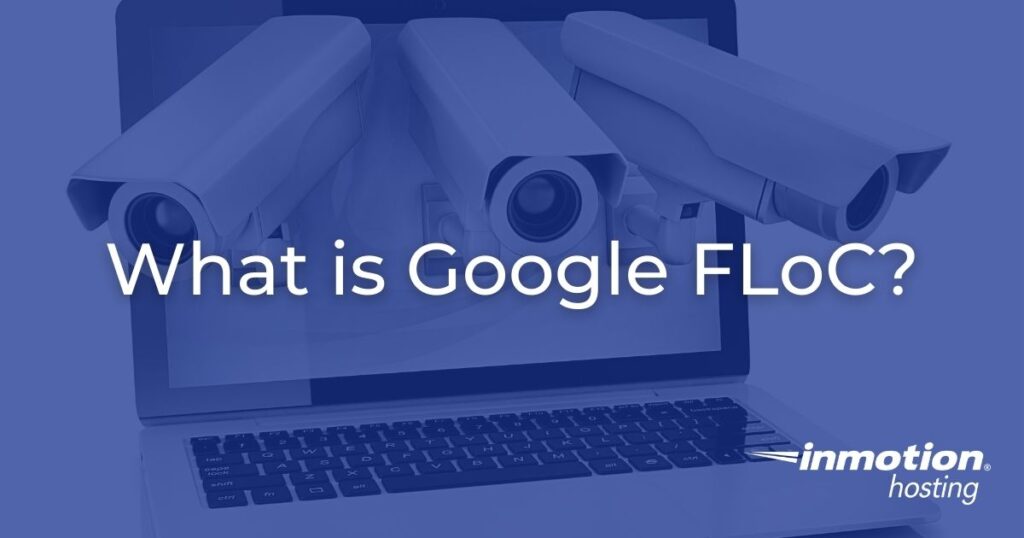
Google FLoC stands for Federated Learning of Cohorts, which is a new way that browsers could approach advertising on the internet that has been proposed by Google.
Current advertising practices often collect third-party cookies to gain information about internet users, then use that information to determine what advertisements those users see.
Google FLoC seeks to replace the use of third-party cookies with viable privacy-first alternatives.
In theory, FLoC would make it far more complicated and difficult for advertisers to track internet users’ activities on the web and use that data to serve them targeted ads.
That means that Google FLoC is good news for user privacy and bad news for advertisers.
In this article, we will break down what FLoC is, how it works, and how it could affect the way online advertising is handled in the future.
What is FLoC?
FLoC is an exploration (by Google) into the different ways in which browsers can group together internet users who demonstrate similar browsing habits.
Typically, which ads a user sees on a given webpage is based on three wide-ranging categories.
Below we will take a look at those three categories and go over some examples of each:
- First-party and contextual info: “place this ad on web pages about weight lifting” or “this ad should be served on pages about mountain bikes”
- General info about the interests of those who will see the ad: “serve this ad to fans of professional football” or “show this ad to people who love cooking”
- Specific previous actions users have taken: “offer 10% off airline tickets to users the left unpurchased tickets in their shopping cart”
Google FLoC focuses on the second category – targeted ads that are based on a users’ interests.
Currently, what a user is interested in is usually based on what sites and pages they visit. This strategy uses tracking techniques such as third-party cookies or less straightforward processes like device fingerprinting.
As far as user privacy goes, it would be better if interest-based advertising could be accomplished without collecting data on a specific individual’s browsing history.
How Would FLoC Work?
With FLoC, Google’s aim is to explore and pursue other ways in which browsers can group users together who demonstrate similar browsing habits.
Doing this would mean that ad companies would be able to observe the habits of large groups instead of focusing on the activity of individuals, and target ads to users partly based on what group those users fall into.
In order to be able to do this, internet browsers would require a way to form clusters that are simultaneously useful and private.
Here is what those two words really mean:
- Useful: grouping together users with similar enough interests, and producing labels that can be used for machine learning.
- Private: When the clusters are created or used, they do not reveal information that is too personal.
FLoC Cohorts
In marketing and advertising, a cohort refers to a group of subjects who share a defining characteristic or set of characteristics.
A Google FLoC cohort is a short name for a group or cluster of a large number of internet users (think thousands). These cohorts are determined by a browser-based on its user’s browsing history.
Browsers utilize machine learning algorithms to develop individual cohorts based on the sites that a user visits. These algorithms compile data based on information such as what websites users visit and the content of those pages, as well as other factors.
Internet browsers then update the cohort over time as that user goes about their business online.
The basis behind this strategy is that the information fed into these cohorts is kept local on the browser instead of being uploaded elsewhere. Instead, the browser only makes the cohort available to advertisers.
To ensure there is value in these cohorts, the browser packs them with thousands of people and distributes them widely.
Google’s goal is to keep the number of cohorts to a minimum to ensure they don’t contain any detailed information on users’ activity and make cohorts so large that they are not useful for tracking purposes.
So now, when you visit a website, instead of that website pulling third-party cookies from your activity, Google will simply tell them you belong to a specific cohort.
Google will not assign labels to cohorts. They are leaving that up to the advertising companies to decide.
Google FLoC is still in its early stages. There is still plenty to hammer out, and this proposal for a new browser standard is being met with some backlash by other browsers as well as ad companies.
For a full explanation of how FLoC works, you can check out the GitHub repository for FLoC.
Keep an eye out for more Google FLoC content and analysis as the project progresses.